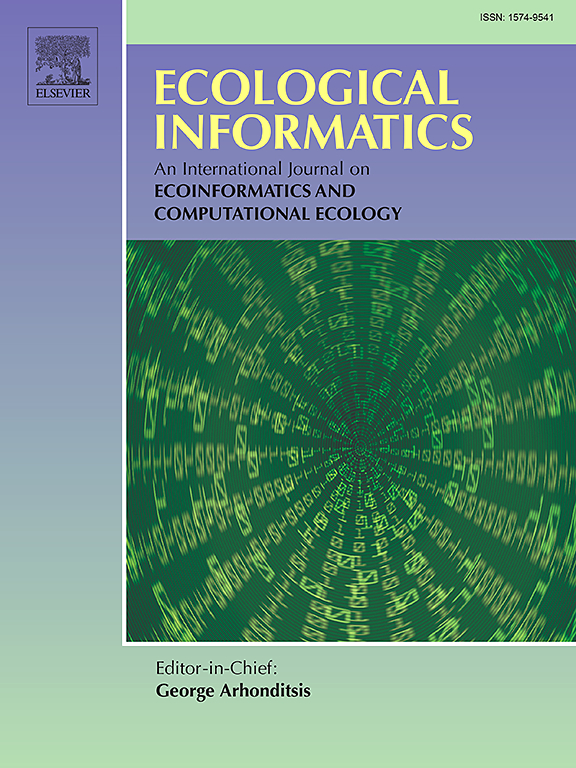Assessment of pollutants from the Canale d'Aiedda basin to the sea: SWAT model and Remote Sensing Approach
IF 7.3
2区 环境科学与生态学
Q1 ECOLOGY
引用次数: 0
Abstract
Water quality impairment is a concern in water resources management. During floods, a large amount of sediment and pollutants may be delivered to the river reaching the coastal zone and forming plumes that impact coastal water bodies. The present paper aims to assess spatial patterns of pollutants from the catchment to the sea, identifying the sources of nutrients within a basin, and their fate in the sea. An ecohydrological model, Soil & Water Assessment Tool (SWAT), and remote sensing techniques (Sentinel-2 imagery, processed on Google Earth Engine), using the Normalized Difference Turbidity Index (NDTI), were coupled and tested in the Canale d'Aiedda basin and Mar Piccolo Sea (Apulia, Southern Italy). The SWAT model was calibrated using daily flow and discrete sediment and nutrient concentrations. The highest specific load of total nitrogen (TN) (∼10 kg ha−1y−1) was simulated in the agricultural subbasins (vineyards, olive groves, and winter wheat). Similarly, the highest specific load of total phosphorus (TP) (0.7 kg ha−1y−1) was predicted in the subbasins where the vineyard was the prevalent crop production. NDTI was analyzed for detecting sediment concentrations in river plumes during a flash flood event (0.066 m3s−1, June 10, 2023). The post-event NDTI showed increased turbidity along the coast. The results indicate that flash floods play an important role in sediment and pollutant loads delivered to the sea. This study also shows that Sentinel-2 satellite data and cloud computing enhanced turbidity monitoring into the sea or lake, complementing the SWAT results. The methodology applied in the study showed that hydrological models and remote sensing should be coupled for basins and coastal areas ecosystems protection.
从Canale d'Aiedda流域到海洋的污染物评估:SWAT模型和遥感方法
水质损害是水资源管理中关注的问题。在洪水期间,大量的泥沙和污染物可能被输送到河流中,到达海岸带,形成影响沿海水体的羽流。本文旨在评估从集水区到海洋的污染物的空间格局,确定盆地内营养物质的来源及其在海洋中的命运。生态水文模型、土壤和水分评估工具(SWAT)和遥感技术(Sentinel-2图像,在谷歌Earth Engine上处理),使用归一化差分浊度指数(NDTI),在Canale d'Aiedda盆地和Mar Piccolo海(意大利南部普利亚)进行了耦合和测试。SWAT模型使用日流量和离散泥沙和养分浓度进行校准。在农业亚流域(葡萄园、橄榄园和冬小麦)模拟了最高的总氮(TN)比负荷(~ 10 kg ha - 1y - 1)。同样,在以葡萄园为主要作物生产的亚流域,预计总磷比负荷最高(0.7 kg ha - 1y - 1)。分析了NDTI在2023年6月10日山洪事件(0.066 m3s−1,2023年6月10日)期间对河流羽流沉积物浓度的检测。事件后NDTI显示沿海岸浑浊度增加。结果表明,山洪在向海洋输送泥沙和污染物负荷中起着重要作用。本研究还表明,哨兵2号卫星数据和云计算增强了对海洋或湖泊浊度的监测,补充了SWAT的结果。研究方法表明,水文模型和遥感应结合起来保护流域和沿海地区的生态系统。
本文章由计算机程序翻译,如有差异,请以英文原文为准。
求助全文
约1分钟内获得全文
求助全文
来源期刊

Ecological Informatics
环境科学-生态学
CiteScore
8.30
自引率
11.80%
发文量
346
审稿时长
46 days
期刊介绍:
The journal Ecological Informatics is devoted to the publication of high quality, peer-reviewed articles on all aspects of computational ecology, data science and biogeography. The scope of the journal takes into account the data-intensive nature of ecology, the growing capacity of information technology to access, harness and leverage complex data as well as the critical need for informing sustainable management in view of global environmental and climate change.
The nature of the journal is interdisciplinary at the crossover between ecology and informatics. It focuses on novel concepts and techniques for image- and genome-based monitoring and interpretation, sensor- and multimedia-based data acquisition, internet-based data archiving and sharing, data assimilation, modelling and prediction of ecological data.
 求助内容:
求助内容: 应助结果提醒方式:
应助结果提醒方式:


